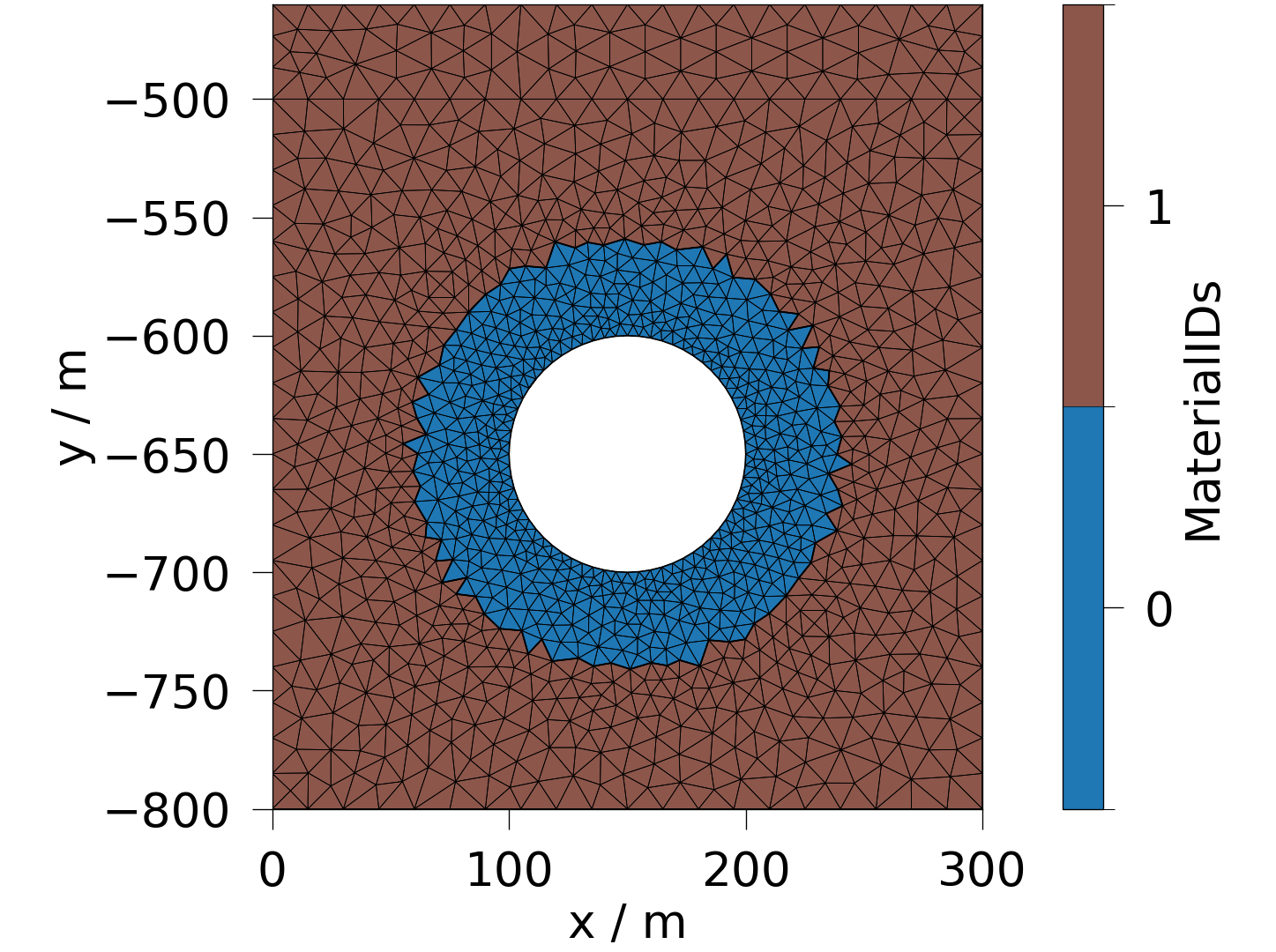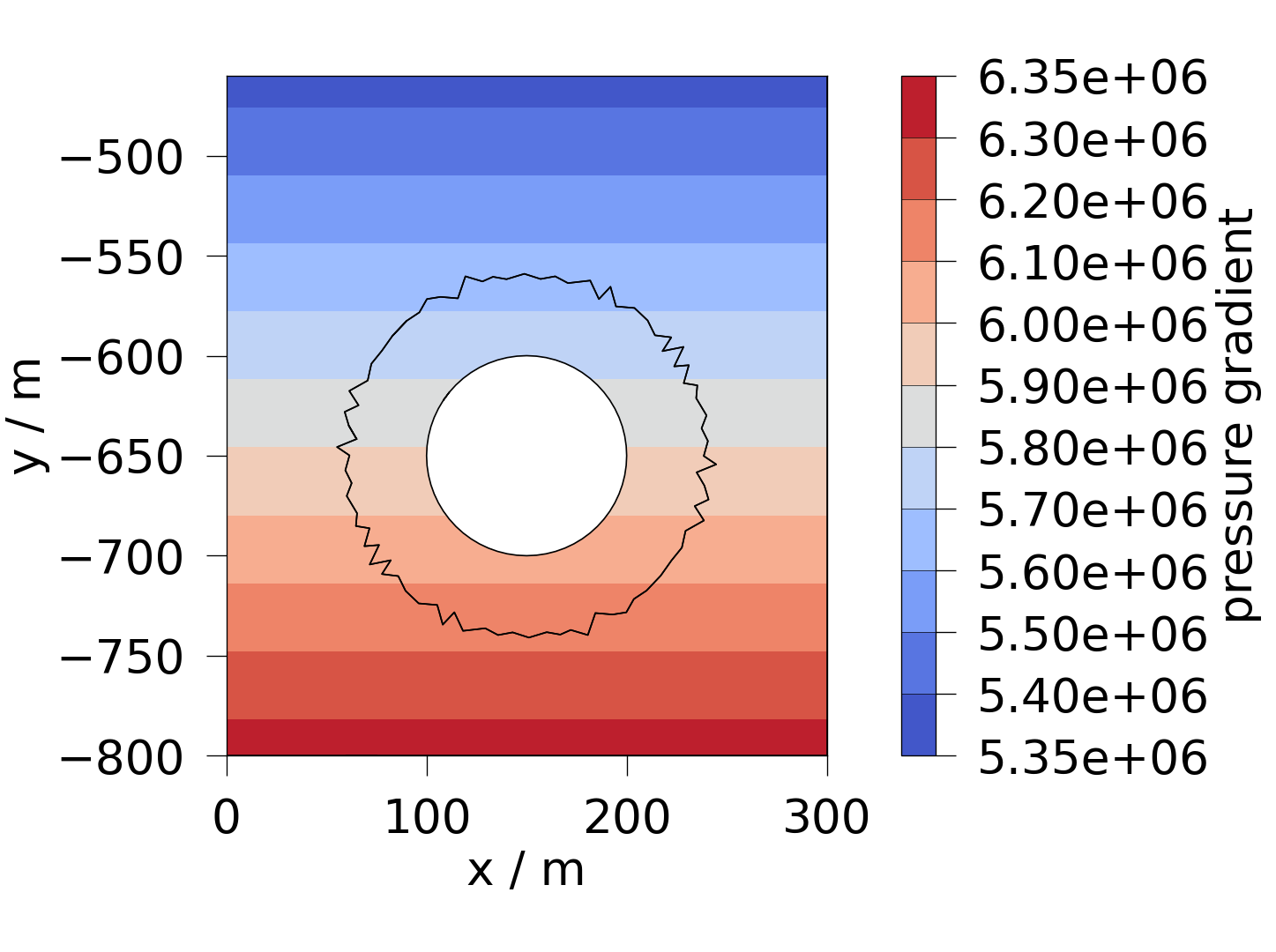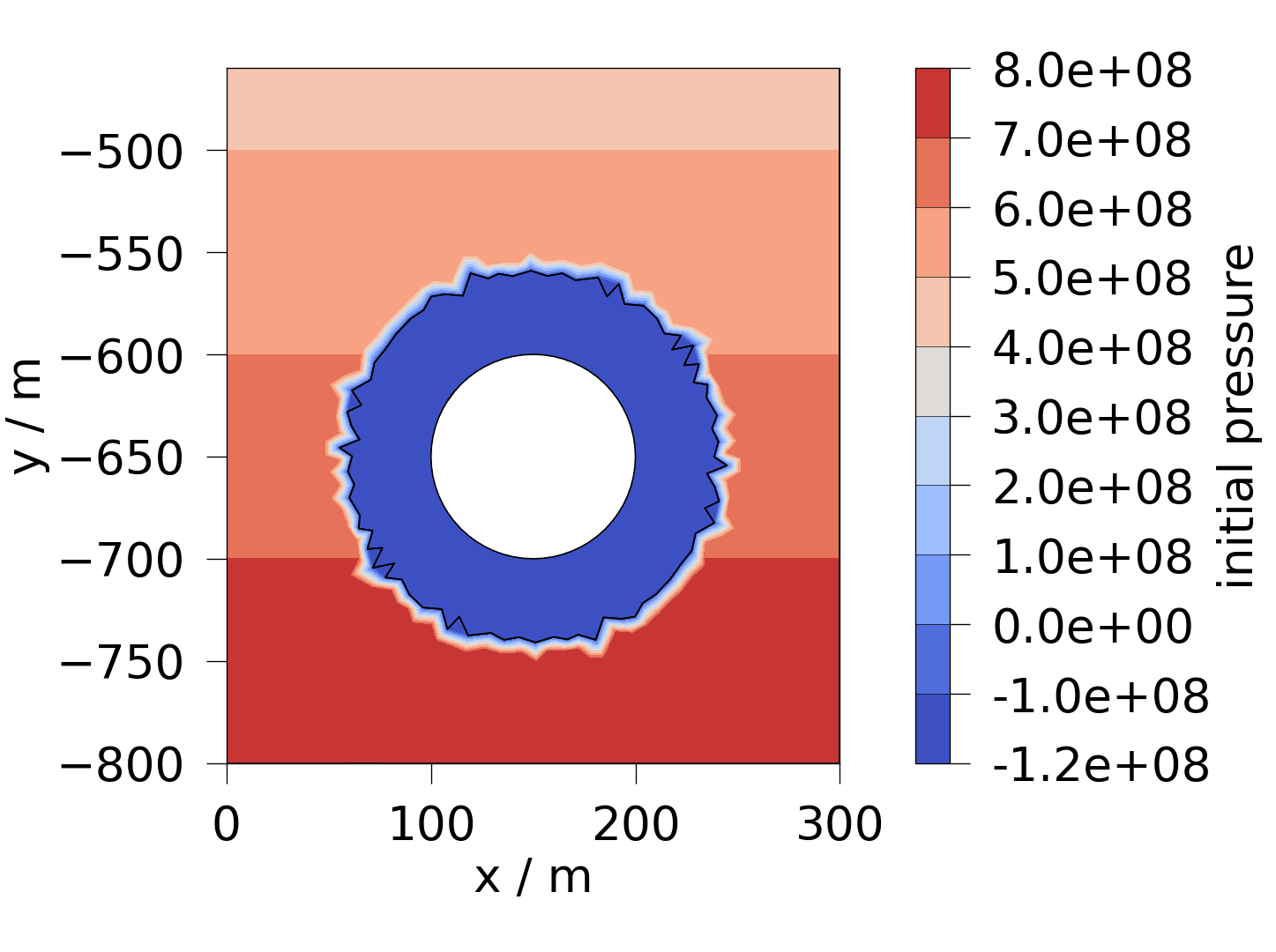Note
Go to the end to download the full example code.
Setting initial properties and variables in bulk meshes#
Section author: Jörg Buchwald (Helmholtz Centre for Environmental Research GmbH - UFZ)
For this example we use an existing mesh file and add the required arrays.
import numpy as np
import ogstools as ot
from ogstools import examples
Setting up material ids and other material properties#
A bulk mesh file is loaded. If it already contains old Material IDs we delete them first.
mesh = ot.Mesh(examples.mechanics_vtu)
mesh.cell_data.remove("MaterialIDs")
One way to set-up new Material IDs is by defining a function.
def material_ids(pt: np.array) -> int:
if np.sqrt((pt[0] - 150) ** 2 + (pt[1] + 650) ** 2 + pt[2] ** 2) < 90:
return 0
return 1
The function is then used to create an array of type np.int32 and same size as the number of elements in the mesh. The numpy array is later implicitly converted into a VTK array of VTK-type Int32 which is the required by OpenGeoSys for Material IDs.
ccp = mesh.cell_centers().points
mat_ids = np.array([material_ids(pt) for pt in ccp], dtype=np.int32)
Then the array is attached to the mesh.
mesh.cell_data.set_array(mat_ids, "MaterialIDs")
fig = mesh.plot_contourf(ot.variables.material_id)

Likewise material properties / MeshElement parameters can be set in the mesh using standard numpy type floating point arrays.
Creating variable/points fields#
In this example we use the y-coordinates to create a linear pressure gradient along the y-axis.
y = mesh.points[:, 1]
p = 1e6 * y / (np.min(y) - np.max(y)) + 4e6
The array is added to the mesh.
mesh.point_data.set_array(p, "pressure_gradient")
fig = mesh.plot_contourf("pressure_gradient")

This also works with multidimensional data.
eps = np.zeros((len(mesh.points), 4))
mesh.point_data.set_array(eps, "epsilon_0")
Mapping element data to node data#
First, we convert the cell data to point data. Subsequently, a new array is created and filled point-by-point.
mat_ids = mesh.cell_data_to_point_data().point_data["MaterialIDs"]
p0 = np.where(mat_ids.astype(int) == 0, -1.2e8, -1e6 * mesh.points[:, 1])
Finally, the array is added to the mesh and can be saved to disc using pyvista/meshio.
mesh.point_data.set_array(p0, "initial_pressure")
# import pyvista as pv
#
# pv.save_meshio("bulk_mesh.vtu", mesh)
fig = mesh.plot_contourf("initial_pressure")

Total running time of the script: (0 minutes 0.752 seconds)

